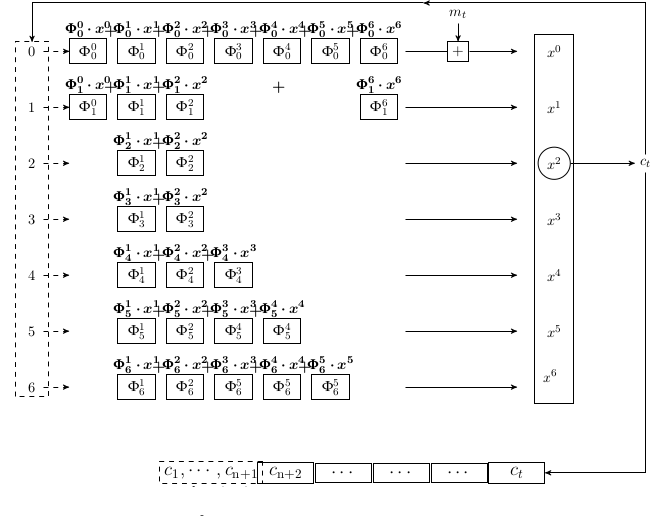
Project ANR-13-INSE-0005-01
Coordinator: Gilles Millérioux
Synchronization is not only an ubiquitous phenomenon in natural world, but can also be an interesting solution for different problems encountered in engineering area. In particular, it turns out that synchronization between coupled entities in a unidirectional way, that is in a master-slave configuration, is a mechanism used in private communication, more precisely in cryptographic setups involving ciphers called self-synchronizing stream ciphers.
The main principle of such ciphers is based on generators delivering complex sequences used to conceal information. Those generators must be synchronized at the transmitter (ciphering) and receiver (deciphering) sides for proper information recovery. The aim of the project THE CASCADE is to propose new self-synchronizing architectures for private communications. On the upgrowing field of group communications, self-synchronization is a key feature for high speed communications like PMR (Professional Mobile Radio) systems, for a lot of new devices which are small, mobile, at low consumption and low cost such as some Bluetooth equipments, RFID tags, sensors that require lightweight cryptography, and also for survivable Cyber-Physical Systems (CPS). The specificity and the originality of the project is the combination of modern tools from control theory and timely cryptographic purposes. More precisely, the use of dynamical systems and modern control theoretical concepts will allow to provide and suggest new self-synchronizing architectures. Indeed, synchronization can be interpreted as a state reconstruction problem while the recovery of the information at the receiver side can be viewed as a left inversion problem. The generators taking the form of nonlinear dynamical systems, different nonlinearities will be investigated, in particular hybrid and polynomial.
Clearly, even though control theory is central for the purpose of the project, issues related to security assessment and implementation will also be deeply examined. Hence, investigations for provable security will be carried out and resistance to distinct attacks will be assessed: algebraic attacks addressed as a parameter identifiability problem, distinguisher-based attacks, side channel attacks. Some of the attacks will be particularized owing to the specificity of the generators which will be proposed. A real-world communication platform for tests and validation will be designed.
Key-words: synchronization, dynamical systems, hybrid systems, private and secure communications, embedded systems.
Implementation results are presented here (also available at Task 3: Hardware-oriented issues).
